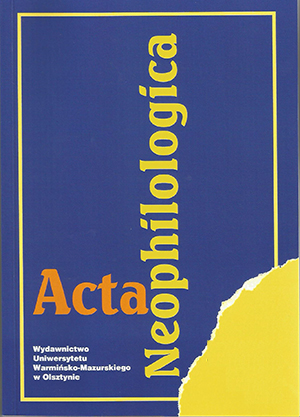A COGNITIVE-CONCEPTUAL MAPPING OF THE HUMAN ELEMENT IN ORTEGA Y GASSET´S ESSAY LA DESHUMANIZACIÓN DEL ARTE (1925). TOWARDS A BIOPOETIC APPROACH
A COGNITIVE-CONCEPTUAL MAPPING OF THE HUMAN ELEMENT IN ORTEGA Y GASSET´S ESSAY LA DESHUMANIZACIÓN DEL ARTE (1925). TOWARDS A BIOPOETIC APPROACH
Author(s): Juani Guerra, Michał GóralSubject(s): Language studies, Language and Literature Studies, Studies of Literature, Philology
Published by: Wydawnictwo Uniwersytetu Warmińsko-Mazurskiego w Olsztynie
Keywords: Dehumanization; Art; Ortega y Gasset, Biopoetics; Neural Theory of Language (NTL); Conceptual Metaphor Theory (CMT); Conceptual Integration Theory (CIT)
Summary/Abstract: The aim of this paper is to map cognitive dynamics of meaning constructionin Spanish language as articulated in Ortega y Gasset’s philosophical essay Ladeshumanización del arte / The Dehumanization of Art [1925]. We will focus on howthe human element is conceptualized, i.e., created and understood by the author. Ourmethod is based on the application of cognitive models of conceptual analysis foundin Cognitive Linguistics known as Idealized Cognitive Models – ICMs [Lakoff & Johnson1980] like Image Schema, Metaphor, Metonymy, and their developments as conceptualblends in Conceptual Integration Theory – CIT [Fauconnier & Turner 2002].The high philosophical complexity of this text’s nuclear conceptual structure HUMANand DEHUMANIZATION makes it necessary to initially map them from theoreticallyestablished cognitive approaches to language organization. In this paper we developsuch analysis as groundwork for a subsequent study involving a more dynamicist viewof their emergent meanings in the framework of Biopoetics [Guerra 2013, 2016].
Journal: Acta Neophilologica
- Issue Year: 1/2017
- Issue No: XIX
- Page Range: 245-255
- Page Count: 11
- Language: English

